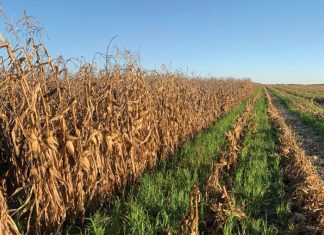Magda du Toit, SA Graan/Grain contributor
These definitions relate to the article “Plant breeding innovation opens new doors” published in the December/January edition of SA Graan/Grain (also available online).
• Genetically modified organism (GMO)
GMOs can be defined as organisms (plants, animals, or micro-organisms) in which the genetic material (DNA) has been altered in a way that does not occur naturally by mating and/or natural recombination. The technology is often called ‘modern biotechnology’ or ‘gene technology’, sometimes also ‘recombinant DNA technology’ or ‘genetic engineering’. Foods produced from or using GM organisms are often referred to as GM foods. (From the GMO Act and www.who.int).
• Cisgene
An intact, functional gene sequence that occurs naturally in a target organism or a sexually compatible species, including its natural regulatory cis-sequences such as its promoter and terminator.
• Genetic trait
A characteristic such as size, shape, taste, colour, increased yields, or disease resistance – also referred to, individually or combined, as phenotype.
• NBTs
According to Dr Magdeleen Cilliers, policy and research manager at the South African National Seed Organisation (SANSOR), ‘new breeding techniques’ (NBTs) is a non-specific collective name for a wide and evolving range of techniques aimed at modifying genomes and/or gene expression. NBTs are innovative new breeding methods used in research and breeding that enable scientists to improve and modify inter alia crops in a more precise manner. These breeding innovations, or NBTs as some refer to them, are used to change the genetic make-up of plants, animals, and microbes (e.g., bacteria and yeast).
NBTs have great potential in plant breeding as they allow the relatively quick, efficient, accurate and cost-effective modification of valuable genetic traits in crops, livestock and industrial microbes. These include gene editing techniques, null segregants, variations on genetic modification and trans-grafting. These tools enable plant breeders to develop novel plant varieties that may provide solutions for environmental and food quality as well as food supply challenges.
Researchers are able to enhance, silence, insert or remove desired traits by using the new innovative techniques. By using these innovations, the plant breeding industry can produce plant varieties in a similar but more precise manner compared to conventional breeding techniques, and in a significantly shorter timeframe. Other than GM methods, says Dr Hennie Groenewald, executive manager of Biosafety South Africa, some of these techniques can make changes without permanently introducing new DNA. CRISPR /Cas9 and TALEs are examples of genome-editing tools and site-directed nucleases.
• TALENs (transcription activator-like effector nucleases)
Transcription activator-like effector nucleases (TALENs) comprise a non-specific DNA-cleaving nuclease fused to the DNA-binding domain of a transcription activator-like effector (TALE) that can be easily engineered so that TALENs can target essentially any sequence. The capability to quickly and efficiently alter any gene sequence using TALENs, holds much promise in biological research and strategies to address genetic diseases. TALENs or transcription activator-like (TAL) effector nucleases, are widely used for precise and efficient gene editing in live cells. Unlike CRISPR-Cas9 technology, TALENs can target any desired sequence within a genome, with no PAM (protospacer adjacent motifs) site restrictions.
(Joung, JK, Sander, JD. TALENs: a widely applicable technology for targeted genome editing. Nat Rev Mol Cell Biol. 2013 Jan;14(1):49-55. CRISPR/Cas
CRISPR is the acronym for clustered regularly interspaced short palindromic repeats whereas Cas refers to a specific associated nuclease.
• Reverse breeding
A novel breeding technique designed to produce homozygous parental lines for a superior heterozygous plant. Subsequent hybridisation of the obtained homozygous parental lines will reconstitute the original superior heterozygous line. (Dirks et al., 2009, Plant Biotechnology J., 7(9): 837-845)
• Shuttle breeding
With shuttle breeding, plant breeders design the breeding programmes to accelerate breeding cycles to reach the prioritised goals such as better adapted cultivars with drought and heat tolerance, resistance or tolerance to pests and diseases, and the ultimate goal of increasing yield potential. Shuttle breeding is an off-season field-testing technique whereby genetic material is grown in contrasting environments to turn over two or more plant generations per year. The environments are chosen for optimal light quality, light intensity, daylength and temperature control to accelerate photosynthesis and flowering, coupled with early seed harvest. It can be integrated with other breeding technologies and does not include transgenesis or gene editing. (Alahmad et al., 2022: Wheat Improvement. Pp 557-571)
Box 2
What do these acronyms mean?
• CO2 – carbon dioxide
• DH – double haploid
• DNA – deoxyribonucleic acid
• DSB – double-strand break
• GE – genetic engineering
• GEd – genome-edited OR genome editing
• GM – genetically modified OR genetic modification
• GMO – genetically modified organism
• gRNA – guide RNA
• LMO – living modified organism
• MAS – marker-assisted selection
• MNs – meganucleases
• NBT – new breeding techniques
• NHEJ – non-homologous end joining
• ODM – oligonucleotide-directed mutation
• rDNA – recombinant DNA
• R&D – research and development
• RdDM – RNA-dependent DNA methylation
• RNA – ribonucleic acid
• RNAi – RNA interference
• SDN – site-directed nucleases
• siRNA – small (or short) interfering RNA
• TALENs – transcription activator-like effector nucleases
• TALEs – transcription activator-like effectors
• T-DNA – transfer – DNA
• ZFNs – zinc-finger nucleases











